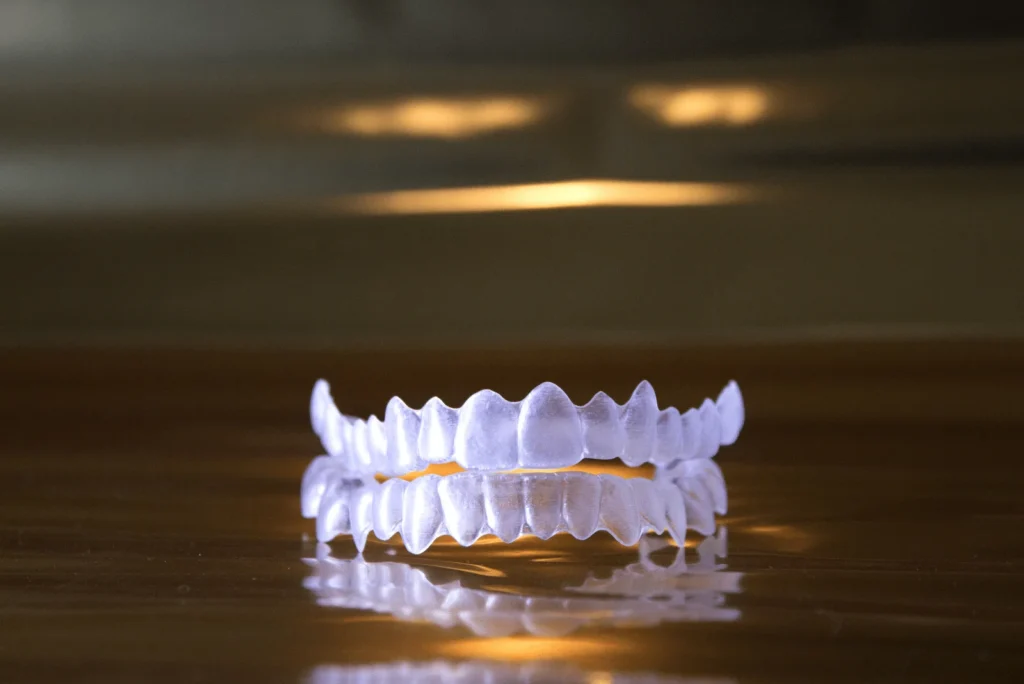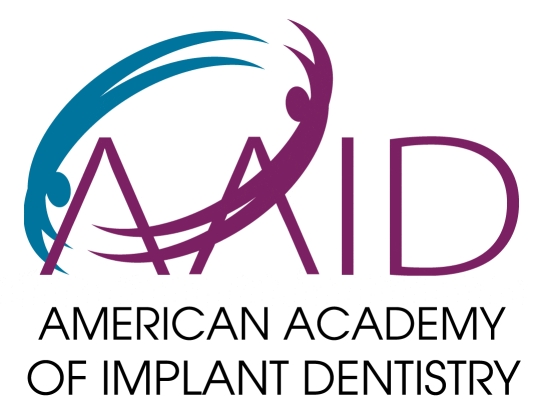Does Invisalign help with grinding is a question we frequently address at Lansdowne Family Dental, as many of our patients struggle with bruxism (teeth grinding and clenching) and wonder if their clear aligner treatment can provide additional benefits beyond straightening teeth. Yes, Invisalign can help reduce teeth grinding in several ways:
- Acts as a protective barrier between upper and lower teeth, preventing direct tooth-to-tooth contact and damage
- Corrects bite misalignments that often contribute to grinding habits by forcing the jaw into unnatural positions
- Distributes grinding forces more evenly across teeth through the smooth plastic surface
- Reduces morning jaw pain and tooth sensitivity commonly associated with bruxism
However, severe stress-related grinding may persist even after achieving proper alignment and might require additional treatment like a dedicated night guard. At our practice, we evaluate each patient’s grinding patterns and bite relationship to determine how Invisalign treatment can best address both their alignment goals and bruxism concerns simultaneously. In this detailed guide, we’ll explore how Invisalign provides grinding protection, discuss the connection between bite problems and bruxism, examine treatment expectations for grinding relief, and explain comprehensive approaches for managing teeth grinding both during and after your clear aligner treatment.
What Causes Teeth Grinding?
There are a few potential causes of bruxism:
- Stress and anxiety
- Sleep disorders
- Abnormal alignment of upper and lower teeth (malocclusion)
- Other neurological or mental health disorders

Can Invisalign Stop Teeth Grinding?
Invisalign aligners work by slowly shifting the position of the teeth over time until they reach the desired alignment. So how does straightening your teeth help with grinding?
There are a few key ways that Invisalign treatment can help reduce or prevent teeth grinding:
1. Improving occlusion
One of the main goals of Invisalign is to improve your bite alignment, also called occlusion. When your upper teeth don’t properly fit with your lower teeth, it can put added pressure on the jaw muscles and contribute to clenching/grinding.
Invisalign aligners gently shift your teeth until your upper and lower arches fit together properly. This takes pressure off the muscles and joints, reducing grinding symptoms.
2. Alleviating pain or discomfort
Sometimes patients grind their teeth at night due to oral health issues like crooked teeth or jaw pain.
By improving the positioning of your teeth, Invisalign treatment can help alleviate any discomfort that may be triggering unconscious grinding. As pain and irritation decrease, the impulse to grind generally does too.
3. Reducing stress
While lifestyle changes are important for managing bruxism, having straighter teeth can help reduce a major source of stress for many people – being unhappy with the appearance of their smile. Feeling good about your teeth can have positive effects on mental health.
Using Invisalign for Bruxism
If you suffer from grinding, Invisalign can be an effective part of your treatment plan. The key is wearing your aligners for 20-22 hours per day as directed. This allows them to properly shift your teeth while also acting as a protective barrier at night.
Here are some tips for getting the most out of Invisalign for bruxism:
- Always wear aligners at night – This prevents direct grinding on the teeth
- Follow dental advice about using aligners with a nightguard if necessary
- Practice stress relief techniques – Reducing anxiety helps curb grinding habits
- Get adjusted aligners as needed – Keep teeth comfortable and prolong aligner effectiveness
| Invisalign Features | Grinding-Related Benefits |
| BPA-free clear plastic aligners | Protects teeth from damage at night |
| Comfortable and removable | Allows use of a nightguard if recommended by dentist |
| Gradual tooth movements | Improves bite alignment over time |
| Full treatment plan | Fixes issues that could be triggering grinding |
- Invisalign aligners protect teeth at night by acting as a shield over them. This prevents the wearing down of the enamel from grinding.
- Aligners are removable, so a nightguard can be worn together with Invisalign if advised by your dentist.
- Shifting the teeth’ position slowly helps properly realign the bite.
- Comprehensive plans correct occlusal and spacing problems that may prompt grinding.
Invisalign Treatment Process for Bruxism
If you choose Invisalign at Lansdowne Family Dental to treat your grinding issue, the process will involve:
- Comprehensive oral exam – Checking for potential causes of bruxism
- Records collection – Photos, scans, and impressions or intraoral scanner
- Custom treatment plan – Addressing occlusal problems plus desired aesthetic results
- Invisalign aligner order – Aligners fabricated for the entire set of planned movements
- Progress appointments – Monitoring tooth movements and aligner effectiveness
- Retention phase – Keeping teeth stable in new positions
We also provide detailed home care instructions for wearing and caring for your Invisalign aligners during treatment.
Following dental advice and wearing aligners as directed gives you the best chance to successfully manage bruxism with Invisalign.
Takeaway: Does Invisalign Help Curb Teeth Grinding?
In summary, Invisalign treatment can be an effective part of a bruxism management plan. Aligners work by:
- Protecting teeth from grinding damage
- Improving occlusion/bite alignment
- Reducing pain and discomfort
- Boosting confidence for less stress
When worn properly, Invisalign aligners not only straighten your smile but also act as a shield against damage from uncontrolled grinding.
Contact our experienced dentists at Lansdowne Family Dental to learn more about how Invisalign can help you manage teeth grinding while creating your dream smile.






